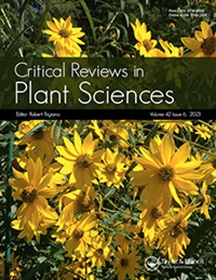伤口诱导新生根再生的早期激素信号网络。
IF 5.6
2区 生物学
Q1 PLANT SCIENCES
引用次数: 0
摘要
植物具有在受伤后再生新器官的卓越能力。在多种植物物种中都能观察到物理创伤后地上部组织的新根再生(DNRR)。在此,我们概述了最近在阐明 DNRR 分子机制方面取得的进展,并特别强调了早期信号成分。伤口诱导化学物质和激素(如茉莉酸、乙烯和水杨酸)最初被认定为防御激素,它们也会影响 DNRR。总之,对 DNRR 基础分子网络的不断阐明,让人们深入了解了植物在伤口反应早期阶段共同激活再生和防御反应的策略。本文章由计算机程序翻译,如有差异,请以英文原文为准。
The early hormone signaling network underlying wound-induced de novo root regeneration.
Plants possess a remarkable capability to regenerate new organs after wounding. De novo root regeneration (DNRR) from aboveground tissues after physical wounding is observed in a wide range of plant species. Here, we provide an overview of recent progress in the elucidation of the molecular mechanisms that govern DNRR, with a particular emphasis on the early signaling components. Wound-inducible chemicals and hormones such as jasmonic acid, ethylene, and salicylic acid, which were originally identified as defense hormones, influence DNRR. Ongoing work elucidating the molecular network underlying DNRR provides insight into the coactivating regeneration and defense responses at the early stages of the wound response in plants.
求助全文
通过发布文献求助,成功后即可免费获取论文全文。
去求助
来源期刊

Journal of Experimental Botany
生物-植物科学
CiteScore
12.30
自引率
4.30%
发文量
450
审稿时长
1.9 months
期刊介绍:
The Journal of Experimental Botany publishes high-quality primary research and review papers in the plant sciences. These papers cover a range of disciplines from molecular and cellular physiology and biochemistry through whole plant physiology to community physiology.
Full-length primary papers should contribute to our understanding of how plants develop and function, and should provide new insights into biological processes. The journal will not publish purely descriptive papers or papers that report a well-known process in a species in which the process has not been identified previously. Articles should be concise and generally limited to 10 printed pages.
 求助内容:
求助内容: 应助结果提醒方式:
应助结果提醒方式:


